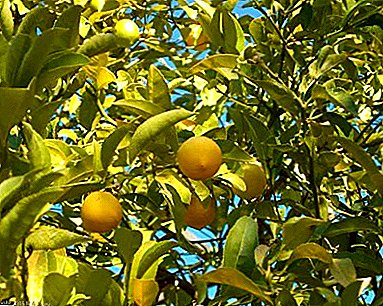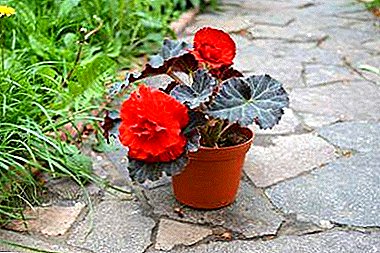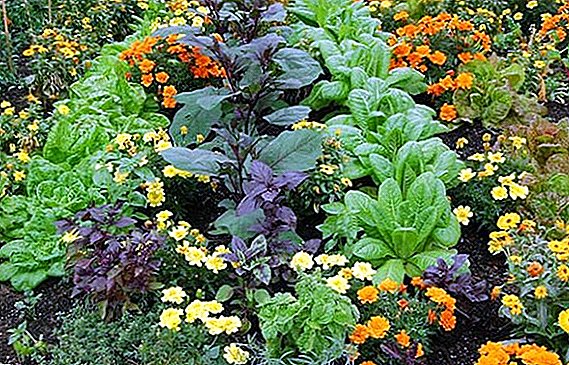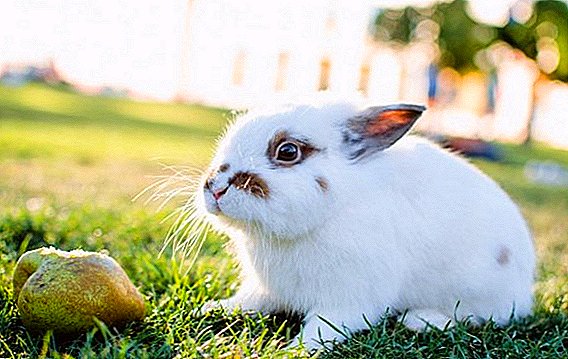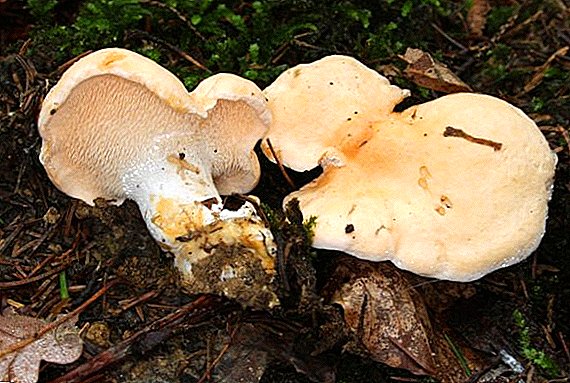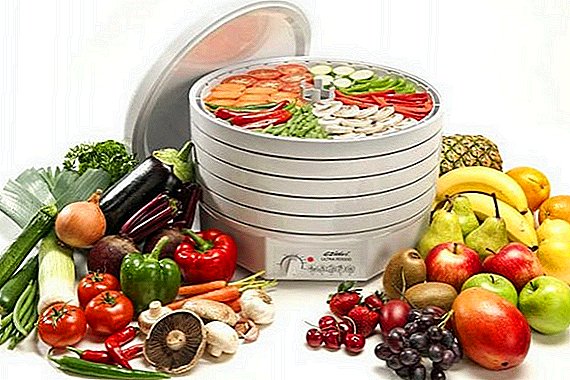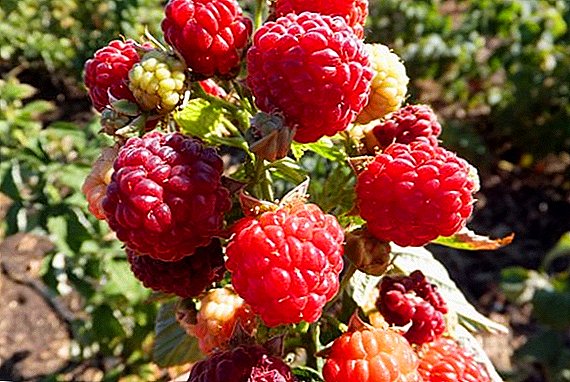
Breeding cattle (bulls) at home for beginners is a profitable business, as it is possible to provide products to the family, and the remnants to sell and make a profit. Beginning farmers mistakenly think that breeding bulls for meat as a business is a troublesome and costly process.
But with proper organization and compliance with the requirements for care, the business will flourish, bringing income. Let's see in detail whether it is beneficial to keep them for meat.
Where to begin?
 The initial organization of any business requires the observance of certain actions. Among them - an adequate assessment of their own strengths and capabilities (calves breeding requires commitment and time). It is also important to take into account the conditions of the region, since the cultivation of large animals requires large areas. To organize the process in urban areas is impossible.
The initial organization of any business requires the observance of certain actions. Among them - an adequate assessment of their own strengths and capabilities (calves breeding requires commitment and time). It is also important to take into account the conditions of the region, since the cultivation of large animals requires large areas. To organize the process in urban areas is impossible.
When planning the supply of meat in catering facilities and shops will require a mandatory business registration.
An important question that determines the specifics of the case: "What does the farmer choose: the purchase of young animals or the independent breeding of cows?". Buying individuals eliminates a number of problems:
- the acquisition of bull seed (or the maintenance of a breeding bull);
- fertilization;
- organization of a separate building.
Keep calves only in dry barns. Stalls should have a solid and reliable floor. Required daily cleaning. It is recommended to clean the floor with a hard brush, and during the warm period - rinse it with running water.
Features of the case
The activity is specific. Calves need to be actively fed to a certain age, then slaughtered (or sell live weight). Feature of the case - a small investment.
The main difficulties are associated with the cost of time and effort to care for animals. With the sale of meat products problems usually do not arise: a wide market allows you to quickly sell the finished product.
Among the features of the content of bulls are the following:
 The correct choice of leash. Animals will tear the thin rope. A suitable option is a metal chain of welded to each other rings. Under the collar of the bull you need to put a piece of cloth to minimize injury to the metal.
The correct choice of leash. Animals will tear the thin rope. A suitable option is a metal chain of welded to each other rings. Under the collar of the bull you need to put a piece of cloth to minimize injury to the metal.- When growing should pay attention to the nature of the individual. Aggressive, wayward and easily excitable males need to be rejected because their content is unsafe.
- In order to guarantee safety and convenience, the animal must install a ring in its nose at 12 months.
Is it profitable?
The period of growth of meat for slaughter is from 12 to 20 months. The average weight of a bull is 350 kg. The cost of meat and profit indicators will depend on the conditions of each specific region. The case will pay off in 1-2 years. Work will be profitable only if properly implemented. Starting such a thing is necessary for people who are not afraid of physical labor.
TIP! If you take the meat directly to stores or restaurants, the income will be significantly higher than the sale to wholesalers.
Characteristics of a suitable site
The preferred area for growing meat gobies is a plot with a large and free area of land. This may be a mini farm, an old cottage, private farmstead. There must be a place for the organization of pens and herds.
In the summer, animals will begin to actively gain weight - this will require daily walking (keeping the stall will increase aggressiveness and cause illness). Near the barn should be meadows or grazing fields.
We arrange the building
 The area on 1 head - 10 sq.m. (includes a place to store food). For the construction of a barn suitable brick or slab (inexpensive but high-quality material). From an economic point of view it is more profitable to rent a ready-made complex with everything you need.
The area on 1 head - 10 sq.m. (includes a place to store food). For the construction of a barn suitable brick or slab (inexpensive but high-quality material). From an economic point of view it is more profitable to rent a ready-made complex with everything you need.
Bulls are clean animals, so the barn needs to be set up so that it is easy to clean. Attention should be paid to the selected area: it should not accumulate water.
Barn Organization
Characteristics of a suitable building are heat (not lower than 8 degrees), good ventilation and the possibility of airing. Under a categorical ban drafts - they provoke disease. With a herd size of more than 10 heads, it is better to automate the process of feeding water and feed.
It is important that the animals have constant free access to the feeders and drinkers (but it is undesirable to put them on the floor, the optimum height is 8-10 cm from the floor level). Farmers use ashes to clean the air inside the building - it absorbs ammonia and gases. You can pour it on the track or fall asleep in the boxes.
How to choose animals?
When choosing a breed you need to consider several important indicators:
- Live weight: Does the calf meet breed standards?
- The level of development, the overall constitution, the presence of defects or deficiencies.
- Pedigree calf (mother productivity and father weight).
Young stock purchase
 In the selection of individuals should pay attention to weight (optimal 90-100 kg) and age.
In the selection of individuals should pay attention to weight (optimal 90-100 kg) and age.
It is preferable to purchase young stock on special farms that breed. You can also purchase calves from breeding breeders.
Milk gobies have a low price when buying (up to 3 months they need to be fed with milk).
Recommendation! It is better to buy individuals that have already switched to self-consumption of grass and feed. Buying calves is preferable in May, then by the fall of next year it will be possible to hand money.
Common species
Some features of cultivation and a payback period depend on the breed. Farmers recommend buying fast-growing young, but do not forget about the taste characteristics of meat.
Before choosing a breed, you need to know which individuals are suitable for keeping in the region of residence (expensive breeding gobies may not settle down in a certain area). List of the best breeds:
- Charolais;
- Kazakh bald;
- Simmental;
- Hereford
- Red steppe;
- Dairy breeds.
Content
Young animals must be kept separate from adult bulls (for calves, a separate shed must be built). The maintenance of bulls with cows is allowed - so the character of males will be more calm.
It is possible to keep bulls in the open air in summer, but the pens will need to be additionally equipped with special plastic booths. Manure removal occurs 3 times a day, immediately after feeding.
IMPORTANT! The growth of hoofed horn should be controlled. 2 times a year you need to clear and trim the hooves.
The territory of walking should be fenced with the strongest materials. It is allowed to let adult bulls out into the street with a special stick and leash. The stick is fixed in the nasal ring of the individual. Not recommended simultaneous walking with females or young.
Nutrition
In productive gobies, the meat index is not less than 70%. To achieve this result, it is necessary to provide intensive feeding. Sen and juicy herbs do not achieve high performance: in the diet must contain such products:
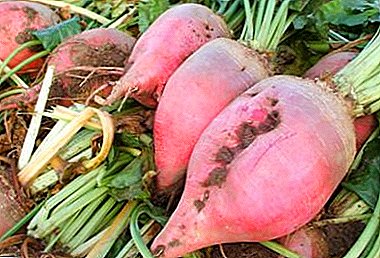 stern beet;
stern beet;- carrots and potatoes (calves need to be boiled and crushed);
- cereals;
- salt;
- food waste.
Adding concentrates will allow the body to replenish the supply of vitamins and minerals. The basis of the diet in winter - hay, animal feed and root crops. In summer, the main product is juicy and fresh grass. Individuals should spend at least 15 hours on pasture.
About reproduction
How to breed bulls? The breeding bull fertilizes up to 50 cows per year. You can keep it in your own farm or use the services (manual connection - a cow is led to the bull). During mating of different chord individuals, crossing or breeding occurs. Among the natural breeding technologies:
- manual (mating under control);
- cooking method;
- free method.
Business
Meat sale is a profitable business that will provide a stable income. The main activity model is to rent a plot and purchase young stock, its rearing and subsequent sale.
For payback, the number of the herd should not be less than 10 heads. It is especially important to create suitable housing conditions and maintain a balanced diet for animals. Up to 15 goals can be handled on your own, over 15 - will require hired staff.
Do you need a design?
Business registration is a prerequisite for sales and supplies. The farmer becomes an individual entrepreneur and receives the appropriate certificates of quality. Several other options are suitable for decoration:
- personal economy (not applicable to business);
- peasant farm (requires the involvement of partners).
Recruiting staff
 Assistants need to choose people who know how and love to monitor animals. It is also important to pay attention to personal qualities (responsibility, discipline).
Assistants need to choose people who know how and love to monitor animals. It is also important to pay attention to personal qualities (responsibility, discipline).
For a herd of 20 bulls, 2-3 assistants are enough. Be sure to have a staff vet. This can be a permanent position or an invited specialist.
Quantitative indicators: spending and profit
Initial costs go to the arrangement of the barn, the purchase of young stock and the purchase of food supply. On average, it will take up to 500 thousand rubles to open a farm and form a herd of 20 heads.
The cost of feed will be up to 20 thousand per year for 1 bull. Later there will be additional costs: mini-tractor, refrigerator, automatic feeders.
Make a plan
The document contains the goal, directions of activity, calculation of costs and profits. The business plan for growing bulls for meat, breeding and maintaining a herd of 20 goals includes such expenses:
- Buying young stock.
- Rent and subsequent arrangement of the barn.
- Veterinary control and purchase of feed.
Is it profitable to breed gobies for meat? On the basis of current prices are calculated income. The estimated amount and term of partial and full payback must be included in the business strategy.
Growing calves for meat is a cost-effective venture. Remember that such an activity requires time, cost and physical effort. With proper organization and a reasonable distribution of processes, you can build a customer base and get a steady income.


 The correct choice of leash. Animals will tear the thin rope. A suitable option is a metal chain of welded to each other rings. Under the collar of the bull you need to put a piece of cloth to minimize injury to the metal.
The correct choice of leash. Animals will tear the thin rope. A suitable option is a metal chain of welded to each other rings. Under the collar of the bull you need to put a piece of cloth to minimize injury to the metal. stern beet;
stern beet;